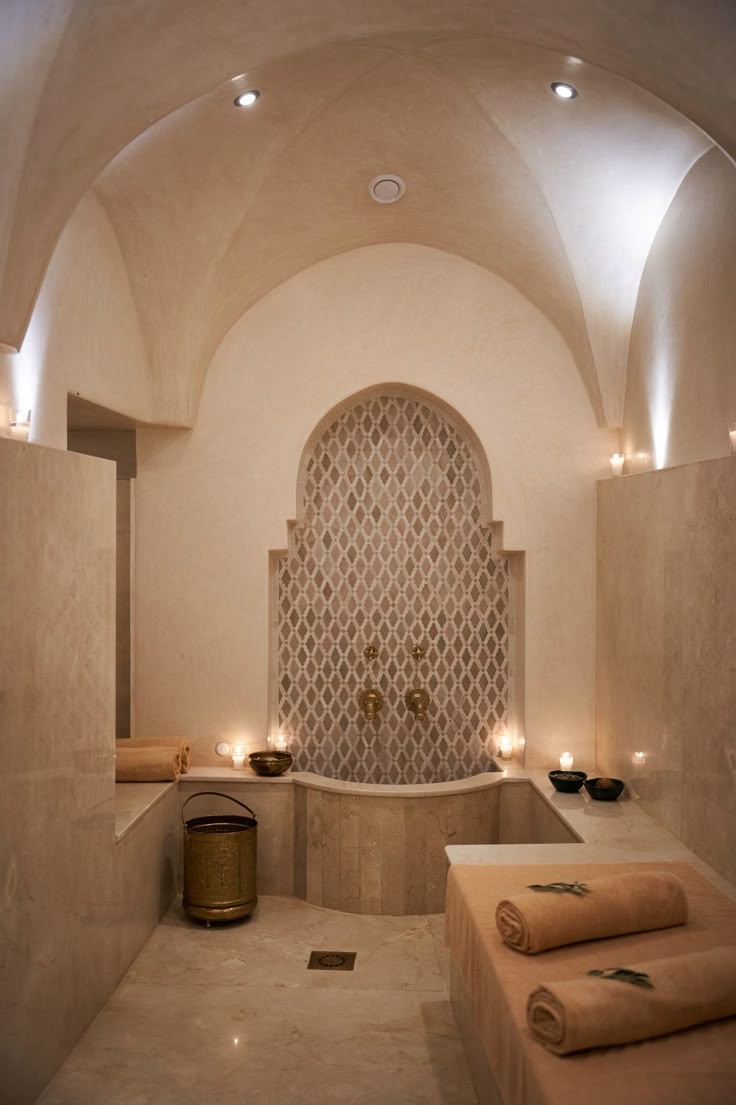Hamam Design: Combining Tradition with Modern Techniques

Hamam Design: Combining Tradition with Modern Techniques
Hamam design is a process that blends the aesthetic and functional features of the traditional Turkish hamam with modern construction techniques. In this process, architectural, structural, mechanical, and interior design elements must be considered together. During renovation, the current condition of the structure must be assessed, and an appropriate restoration process should be planned.
1. Hamam Design
1.1. Spatial Planning
In hamam design, the traditional schema should be adhered to while creating the following spaces:
-
Changing Area (Camekân): This is the area designed for users to prepare. It typically includes wooden seating and locked cabinets.
-
Warm Area: This is an intermediate area that provides the temperature transition from the entrance to the hot section.
-
Hot Area (Göbektaşı Area): This is the main section of the hamam. A heated göbektaşı (central stone) is placed in the middle, surrounded by fountains (kurnas) and private washing cells (halvet).
-
Külhan: The area where the water and heat source are located, ensuring the even distribution of heat throughout the structure.
In this planning, spatial hierarchy, temperature zones, and natural ventilation should be carefully considered.
1.2. Materials to be Used
The materials used in the hamam must be water- and moisture-resistant, while also maintaining traditional aesthetics:
-
Floor and Wall Cladding:
-
Marble (such as White Afyon, Marmara, Elazığ Vişne varieties which are water-resistant)
-
Natural stones (Travertine or granite)
-
Ceramic cladding (with special non-slip surfaces)
-
-
Göbektaşı and Fountain Materials:
-
Natural marble (preferred for its ability to retain heat for extended periods)
-
-
Ceiling and Ventilation:
-
An Ottoman-style domed ceiling is recommended. In modern times, reinforced concrete domes or steel constructions can be used as alternatives.
-
Ventilation ducts and light skylights are crucial for natural lighting and steam evacuation.
-
2. Hamam Renovation
When renovating a hamam, the existing structure should first be analyzed. Planning should take into account both structural and mechanical systems:
2.1. Structural Reinforcement
-
In older hamams, domed or vaulted roofs may have weakened over time. These should be reinforced with reinforced concrete or steel supports.
-
Moisture and mold control must be prioritized by renewing waterproofing and drainage systems in the walls.
2.2. Floor and Cladding Renewal
-
Existing marble and stone cladding should be restored or replaced appropriately.
-
Non-slip and waterproof surfaces should be created.
2.3. Heating and Plumbing Systems
The hamam’s plumbing system must be carefully designed to ensure water is delivered at the correct temperature and pressure:
-
Instead of the traditional külhan system, modern central heating or underfloor heating systems can be used.
-
Equal distribution of hot and cold water should be achieved using balancing tanks.
-
Copper or stainless steel pipes should be used, as plastic pipes are not suitable due to temperature conditions.
